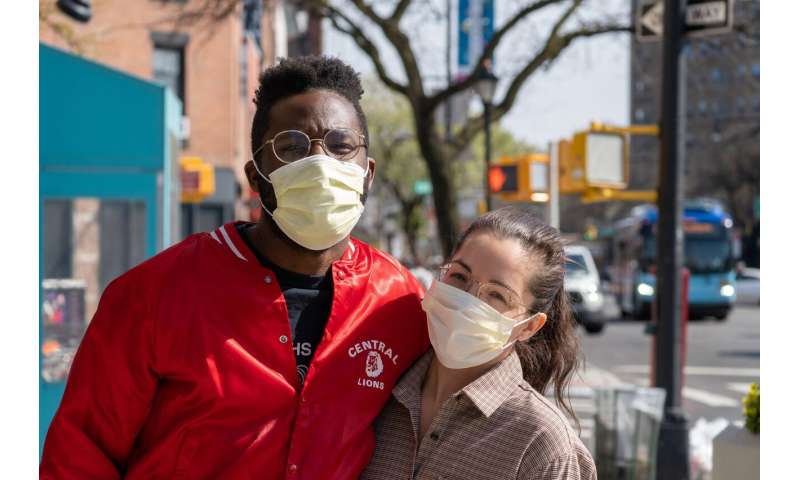
Men, non-immigrants, younger adults and people living in rural areas are the Canadians most likely to resist COVID-19 safety measures such as mask wearing, handwashing, social distancing and avoiding crowds, according to a Western analysis of a Statistics Canada survey.
Researchers Anthony Jehn and Anna Zajacova examined the details of StatsCan’s June survey and found that these groups were less likely to heed public health advice aimed at preventing the disease’s spread.
The analysis by Jehn, a doctoral candidate in sociology, and Zajacova, a sociology professor, is the first rigorous look at how well Canadians intended to follow four public health measures as social and business activities were resuming after spring lockdowns. The paper is to be published in the journal Canadian Public Policy.
The majority of the 4,200 survey respondents expressed willingness to comply with all four measures, but there were notable differences among groups, said lead author Jehn—and the finding should prompt policymakers to target the non-compliant groups with additional public-health interventions.
Mask-wearing was the biggest single sticking point across all demographic categories, the analysis found. Fewer men than women said they wore or would wear masks at a time when that was being strongly recommended by health officials but wasn’t yet mandatory in most places. Overall, just 67% of all respondents said they wore masks regularly; however, this number would have increased to 81% if all Canadians wore masks at the rate of highest compliers.
Of all the COVID-prevention measures, the reported compliance rate was highest for handwashing (94%), followed by social distancing and avoiding crowds, each at more than 80%. But women were 50% more likely than men to report maintaining social distances and avoiding crowds, and over 150% more likely to wash their hands more frequently, the analysis found. Seniors were more than twice as likely as young adults to wear masks and avoid crowds.
Jehn said policymakers should take into account that the survey was based on yes-no questions and self-reporting, which might mean over-reporting of precautions taken.
For example, while 94% reported more frequent handwashing; although observational studies have shown that even when there’s no pandemic people tend to inflate the number of times and duration of handwashing. “People want others to think they’re adhering to social norms, even if they’re not actually doing so,” Jehn said.
The people who reported taking the fewest precautions are now, in the second wave, among the highest spreader groups, he added.
“I think it’s reflective of how different people perceive the risk of COVID-19 in general,” Jehn said. “If you’re in a rural area and your case count is low, chances are you’re not thinking about it all that much.”
The study also showed a difference in compliance by socioeconomic status. (Questions about employment, education and type of dwelling acted as surrogates for questions about income levels.)
Adults with a university degree were most likely to report they wore masks and avoided crowds. By contrast, those with trades certificates were least likely to say they adhered to all four precautionary behaviors. In fact, they were only half as likely to do so as adults with a high-school diploma or less.
Source: Read Full Article
